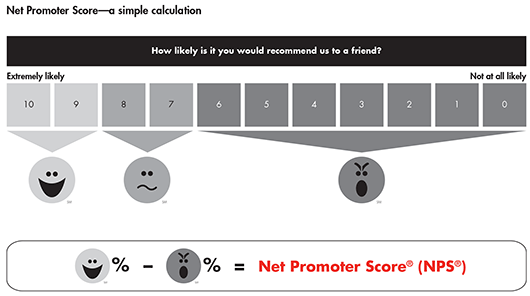How is NPS measured?
Net Promoter Score® is composed of two questions (otherwise one, as in many instances), directed to your audience: customers, users, employees, etc.
The audience is quite defined in every case & depends much on the primary objective of your survey. We will keep it focused on Users & Customers for the scope of this discussion here.
The question in any NPS survey are synonymous to the ones below:
- How likely are you to recommend [Product/Service] to a friend?
The answer or response is limited to a scale of 0-10, where 10 implies ‘Most Likely’ and 0 implies ‘Not Likely’ - Tell us more on why you chose ‘XX’
This happens to be a free text field which allows the user to elaborate on the reasoning behind their response.
Based on the survey response to the 1st question ideally, each user is categorized/segmented as:
- Promoter = if their response is 9 or 10
- Passives = if their response is 7 or 8
- Detractor = if their response is 6 or lower
This helps businesses quantify and qualify the quality of experience that end users are being exposed to.
When something is quantifiable, it can be improved – and the 1st question typically helps you analyze the scope for improvement. Additionally, the 2nd i.e. the free text field helps you find the exact areas of improvement – since these free text fields offer the user an opportunity to express their opinions unhindered.
The NPS Formula
The NPS is calculated as the difference between the percentage of Promoters and percentage of Detractors.

Image Credit: Bain & Co.
Thereby, at any given time, the NPS score could vary between a range of -100 to 100